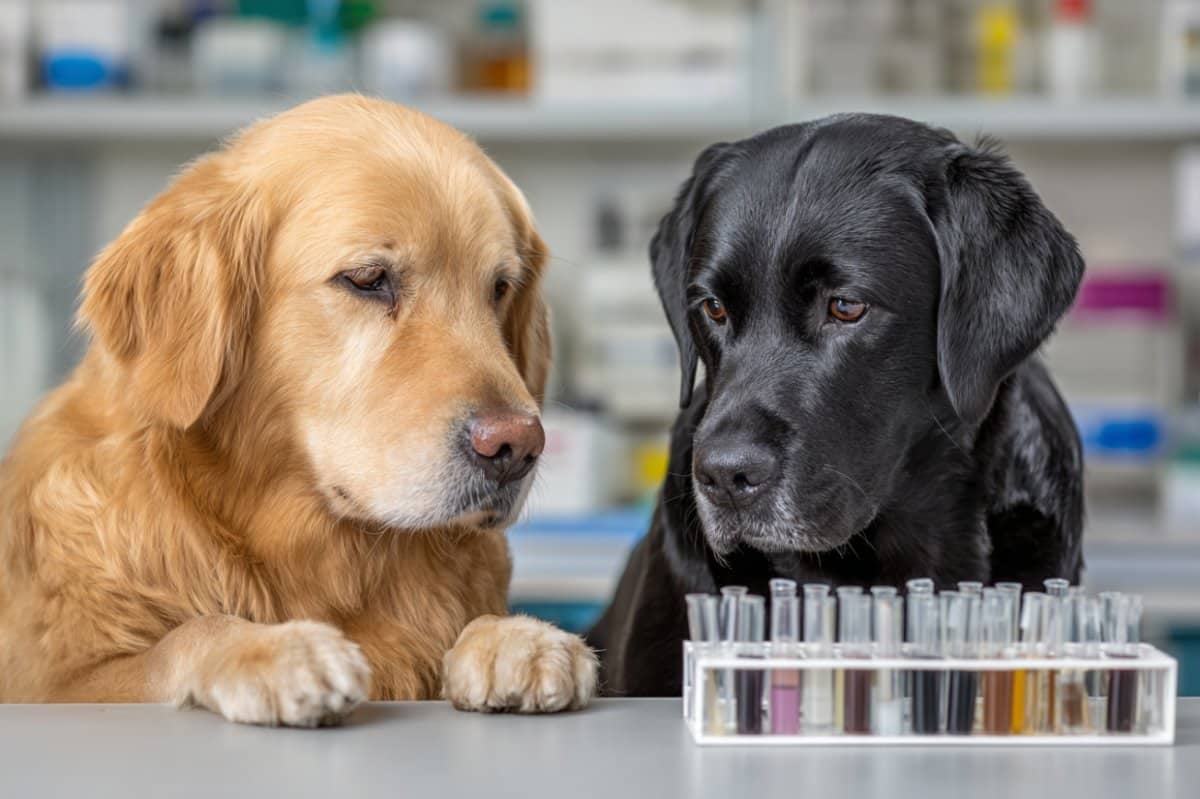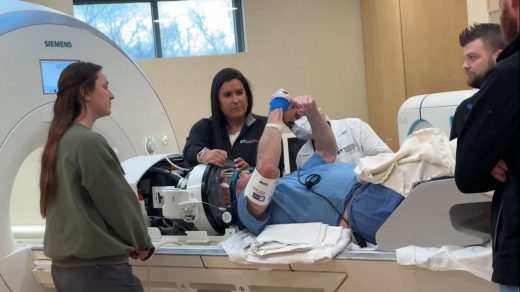
Two trained dogs learned to detect Parkinson’s disease by sniffing scent samples from human skin. They were part of a study aiming to improve early diagnosis of the condition. Bumper and Peanut trained for nearly a year on hundreds of odor samples. Parkinson’s still has no clear clinical test, making early detection especially valuable.
Dogs trained to detect a silent signal
Parkinson’s disease affects nearly 10 million people worldwide. Yet, diagnosis usually happens only after clear motor symptoms develop, like tremors or muscle stiffness. These signs often don’t appear until the disease has already caused damage to the brain. That’s why scientists are searching for early biomarkers—biological clues that could alert doctors before symptoms worsen.
In this study, the focus turned to smell. Previous anecdotal reports, including one from a woman named Joy Milne who noticed a change in her husband’s scent long before his Parkinson’s diagnosis, sparked interest in whether the disease might have a detectable odor. The new research confirms those early suspicions on a scientific level.
Bumper and Peanut were trained by the charity Medical Detection Dogs to detect Parkinson’s disease. Their training lasted between 38 and 53 weeks. They learned to tell apart skin swabs from people with and without Parkinson’s. Altogether, they were exposed to 205 odor samples during their training.
Once trained, the dogs participated in a double-blind test—where neither the handlers nor the researchers knew which samples came from people with Parkinson’s. Only a computer tracking system held that information. The setup involved lines of samples presented on a stand. To avoid guessing or bias, researchers re-presented the samples the dogs did not initially respond to in new sequences until the dogs evaluated all of them.
In the trial, the dogs correctly identified the samples from drug-naïve individuals with Parkinson’s at remarkably high rates. One dog achieved a sensitivity of 80%, and the other reached 70%. Specificity, which refers to correctly ignoring non-Parkinson’s samples, was even higher—90% and 98%, respectively.
Related Stories
A new tool for early diagnosis
The high accuracy levels were no fluke. “The dogs in this study achieved high sensitivity and specificity and showed there is an olfactory signature distinct to patients with the disease,” explained Nicola Rooney, Associate Professor at Bristol Veterinary School and lead author of the study. “I believe that dogs could help us to develop a quick non-invasive and cost-effective method to identify patients with Parkinson’s disease.”
Right now, there’s no definitive lab test for Parkinson’s. Doctors must rely on observing symptoms and ruling out other conditions. But as Claire Guest, CEO and Chief Scientific Officer at Medical Detection Dogs, pointed out, “There is currently no early test for Parkinson’s disease and symptoms may start up to 20 years before they become visible and persistent leading to a confirmed diagnosis.”
The longer it takes to recognize Parkinson’s, the harder it is to slow down its progression. That’s why the idea of detecting the disease before symptoms show up is so important. “Timely diagnosis is key,” Guest said. “Subsequent treatment could slow down the progression of the disease and reduce the intensity of symptoms.”
More than just a dog trick
What makes these results even more promising is that the dogs could identify Parkinson’s even in people who also had other health conditions. This suggests the scent signature of the disease is strong and specific.
The double-blind structure of the trial played a key role in the study’s reliability. In this design, only a computer algorithm knew which swabs were from individuals with Parkinson’s. Researchers also presented each sample line in reverse order and reshuffled uncertain samples until the dogs made a clear choice. This process helped eliminate human bias and ensured that the dogs’ results were based solely on their detection skills.
Professor Perdita Barran, who works in Mass Spectrometry at the University of Manchester, also praised the study’s approach and its broader impact. “It’s wonderful to be part of this research inspired by Joy Milne and our Nose2Diagnose programme,” she said. “This study adds to the growing body of evidence showing that simple, non-invasive skin swabs can be used to diagnose Parkinson’s disease, offering a faster and more accessible method for early detection.”
What’s next?
While using dogs in routine medical testing is not always practical, their noses might help researchers identify the exact molecules behind the Parkinson’s smell. That could lead to new machines or tests that mimic canine scent detection.
“Identifying diagnostic biomarkers of PD, particularly those that may predict development or help diagnose disease earlier is the subject of much ongoing research,” said Rooney. With this study, scientists move a step closer to pinpointing those biological markers in a form that can be used widely in clinics and hospitals.
Dogs already detect other conditions like certain cancers, infections, and even COVID-19. This study’s results suggest adding Parkinson’s to that list—with real benefits for early and accurate detection. As research continues, the goal is to turn what began as a chance discovery—one woman noticing a strange scent—into a reliable method that could one day save lives. And thanks to dogs like Bumper and Peanut, that day may not be far off.
This was shown first on: https://www.thebrighterside.news/post/dogs-can-detect-parkinsons-disease-by-sniffing-skin-study-finds/


